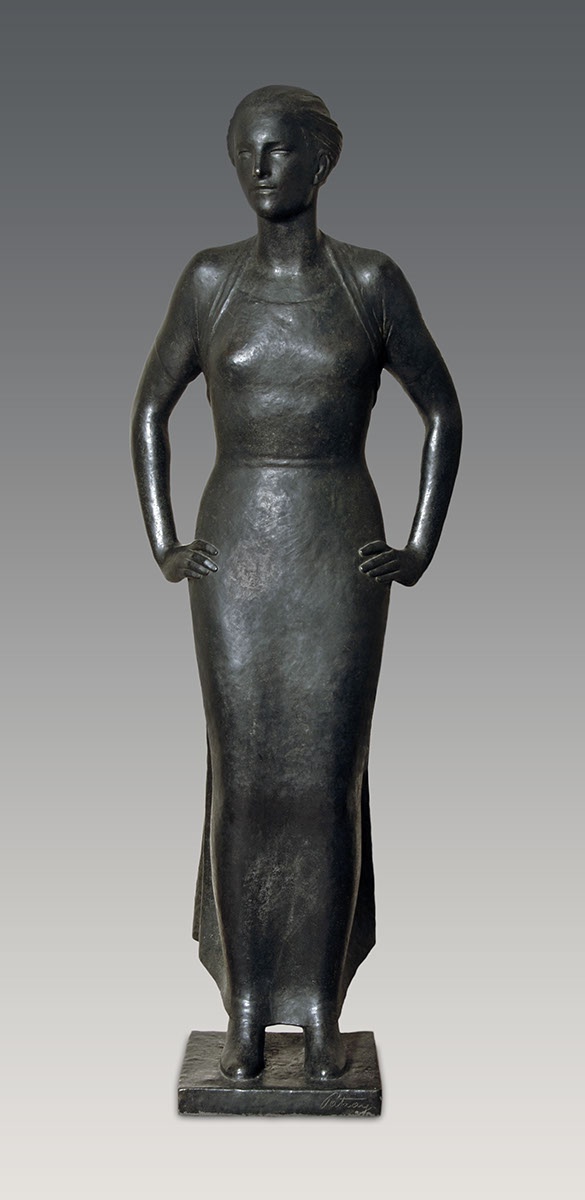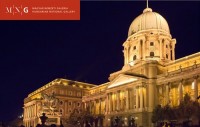Pál Pátzay, after some avant – garde endeavours, following the German Adolf Hildebrand, he took a stand by classicist modeling of a decorative effect to which he adhered almost throughout his life. Originally, the Danube Wind was meant to be a public statue: it was first erected on the promenade by the Danube from where it was transferred to the precincts of Szabadság (today Dagály) bath in 1950 and from there to the National Gallery in 1977. Just like the rest of his public works made before 1945, this one is also characterized by a fresh and opened spirit. The dress of the young woman pressing against her body, along with the slight flutter of the skirt suggests a gentle waterside breeze. The slightly idealized female figure standing on a quadratic base can be interpreted as the ideal projection of reality, but Pátzay also paid much attention to keeping the figure anatomically authentic. In 1994, the City government of Budapest had a copy made after the work in the Gallery to have it erected along the Danube, close to its original location.
en

